SaltwaterServr
Sr. Member
I just picked up an older model Aster two person hand-held core drill, circa the 1960's. Has 38' of total drill stem. 7/8" nominal diameter core.
I've never run one, never seen one run. The gentleman I got it from never ran it either, it was his brother's machine. His brother passed away recently, which is how it came into my possession.
From what I understand from reading online, the water flow should be about where the effluent coming out of the core hole is fairly warm and about the consistency of buttermilk. Does that sound about right to folks?
Now, pulling that stem out of the hole. I'm guessing the motor should be running at near idle speed to keep the drill stem turning to aid in pulling it out. I'll need to build a frame with pulleys to hold the motor's weight while it's pulled out.
So we pull the motor up high enough that we can get to the next section of drill stem under it. Shut down the motor so that we can disconnect the top stem and then thread the still mostly recessed stem in the bore hole to pull it out.
How in Sam Hill do you keep the drill stem still in the bore hole from falling back down into it? The stem pieces I have don't have any thing to pin it or hold it in place, just smooth pipe. I've seen a video of a truck-based rig that had some kind of ground-level clamp, but my drill didn't come with anything like that.
Any recommendations or ideas how it's done? I don't plan on drilling holes a full 40' down, but if the urge should strike to go further than one 5' piece, I'd like to have my ducks in a row.
I've never run one, never seen one run. The gentleman I got it from never ran it either, it was his brother's machine. His brother passed away recently, which is how it came into my possession.
From what I understand from reading online, the water flow should be about where the effluent coming out of the core hole is fairly warm and about the consistency of buttermilk. Does that sound about right to folks?
Now, pulling that stem out of the hole. I'm guessing the motor should be running at near idle speed to keep the drill stem turning to aid in pulling it out. I'll need to build a frame with pulleys to hold the motor's weight while it's pulled out.
So we pull the motor up high enough that we can get to the next section of drill stem under it. Shut down the motor so that we can disconnect the top stem and then thread the still mostly recessed stem in the bore hole to pull it out.
How in Sam Hill do you keep the drill stem still in the bore hole from falling back down into it? The stem pieces I have don't have any thing to pin it or hold it in place, just smooth pipe. I've seen a video of a truck-based rig that had some kind of ground-level clamp, but my drill didn't come with anything like that.
Any recommendations or ideas how it's done? I don't plan on drilling holes a full 40' down, but if the urge should strike to go further than one 5' piece, I'd like to have my ducks in a row.



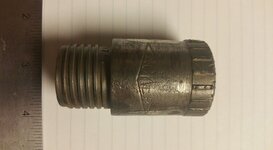
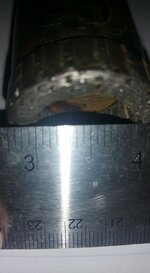
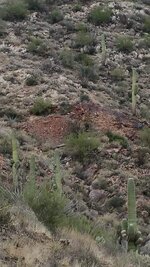
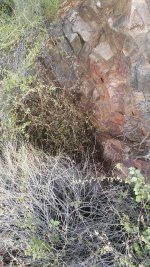
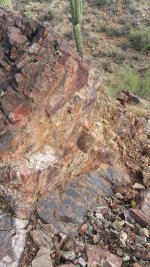
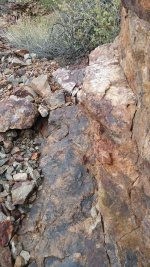
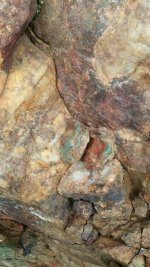
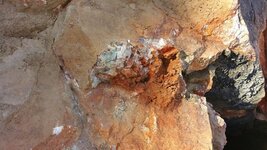
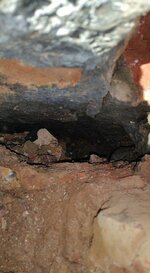

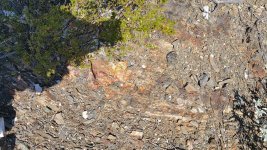
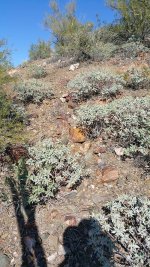
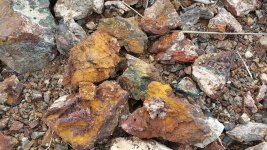

 ) and try to find me a piece of baler belting that would wrap over one end of the boards and attach with screws and/or nails to the outer sides of the boards. Baler belting is basically the same belting they used in the old days of early tractors, when the PTO was a large pulley sticking out of the side or front of the engine. Remember seeing old machinery and sawmills being run with those long belts? Well, they still make the stuff, and BOY does it work great!! Is waterproof, would provide enough give to ensure that the hydraulics could never rip the clamp apart, etc.
) and try to find me a piece of baler belting that would wrap over one end of the boards and attach with screws and/or nails to the outer sides of the boards. Baler belting is basically the same belting they used in the old days of early tractors, when the PTO was a large pulley sticking out of the side or front of the engine. Remember seeing old machinery and sawmills being run with those long belts? Well, they still make the stuff, and BOY does it work great!! Is waterproof, would provide enough give to ensure that the hydraulics could never rip the clamp apart, etc.





